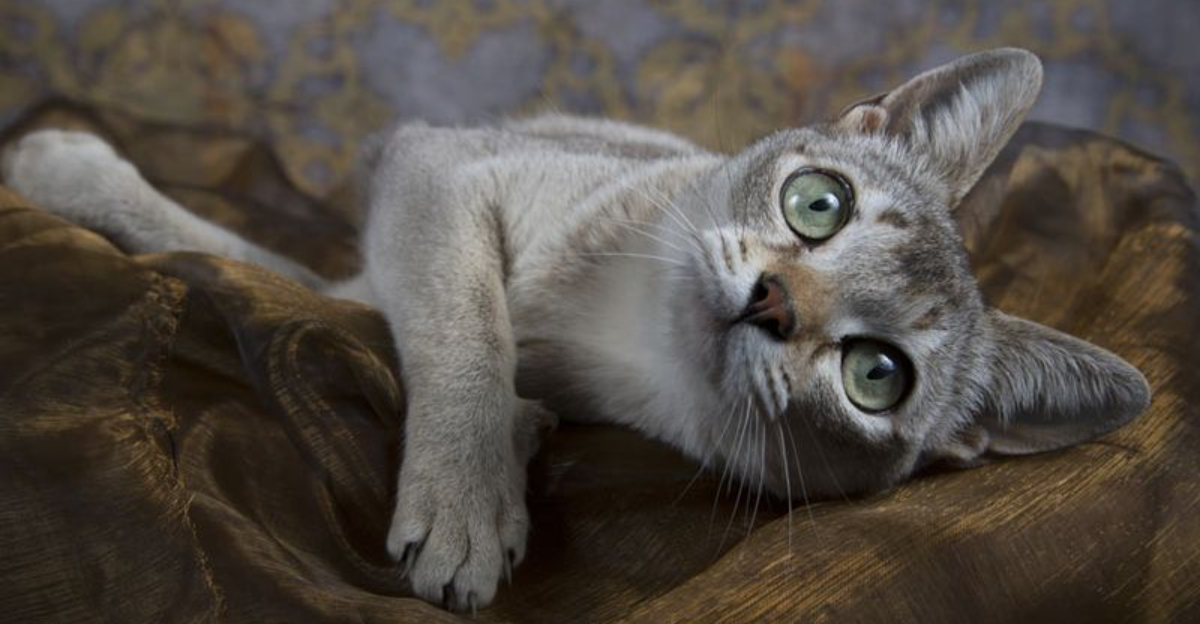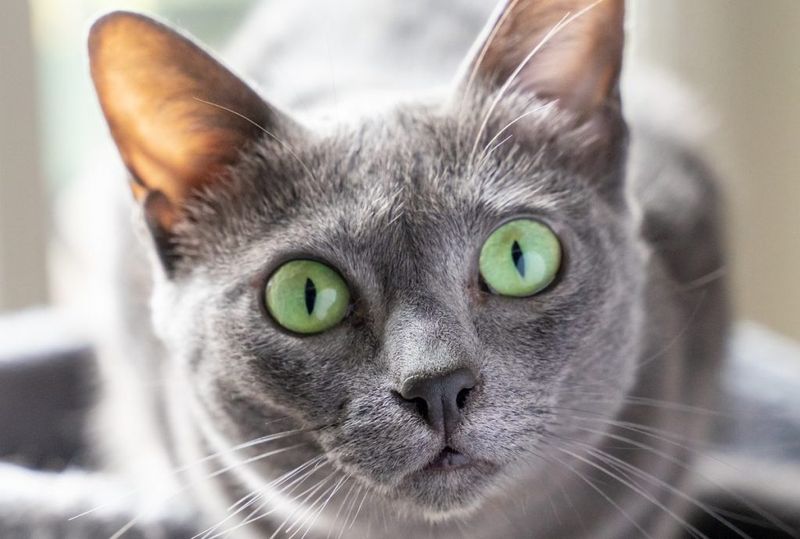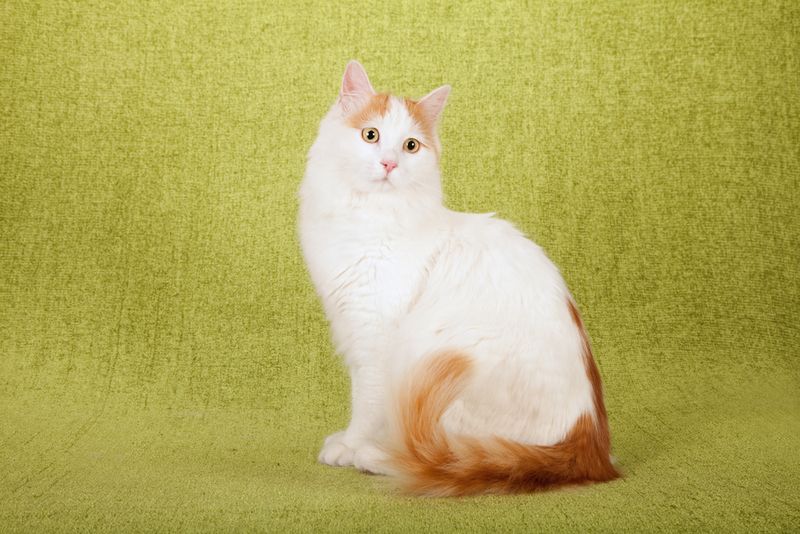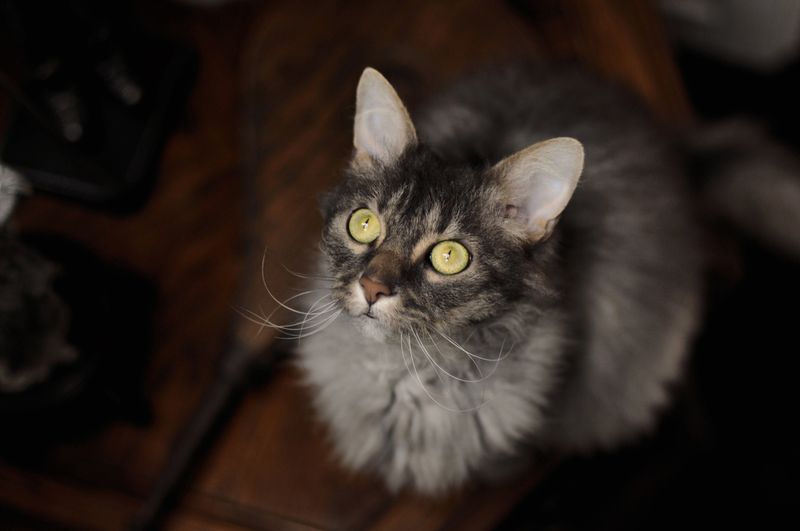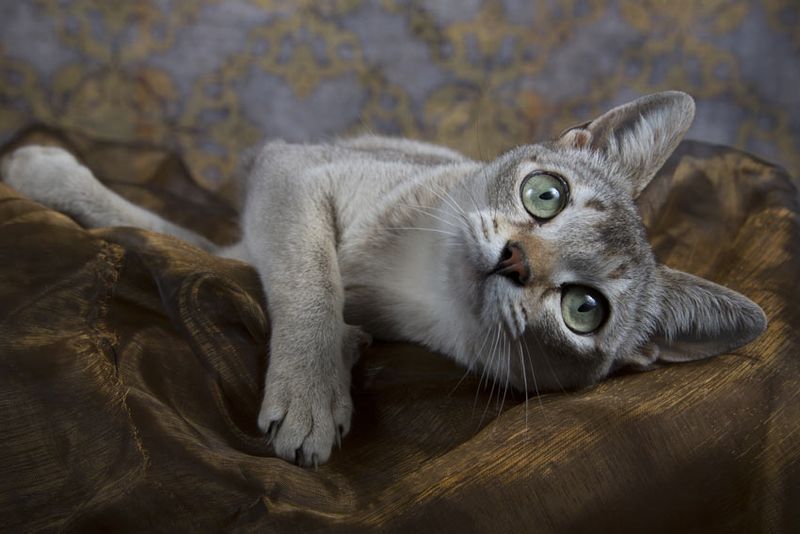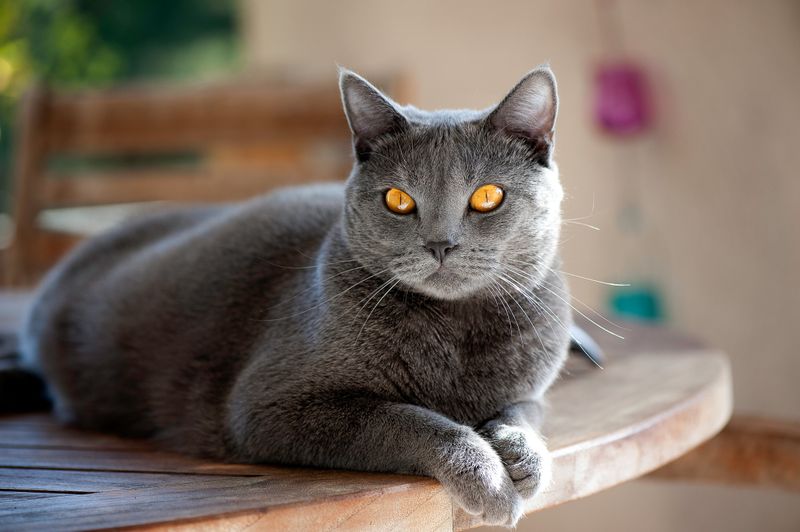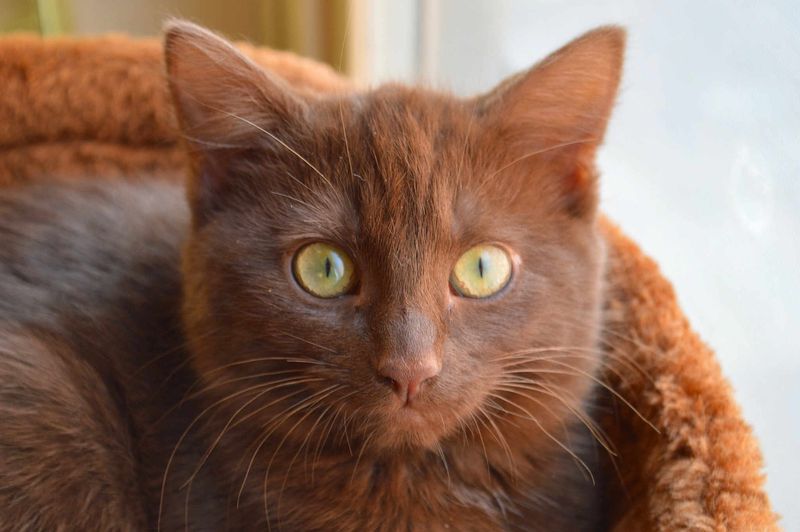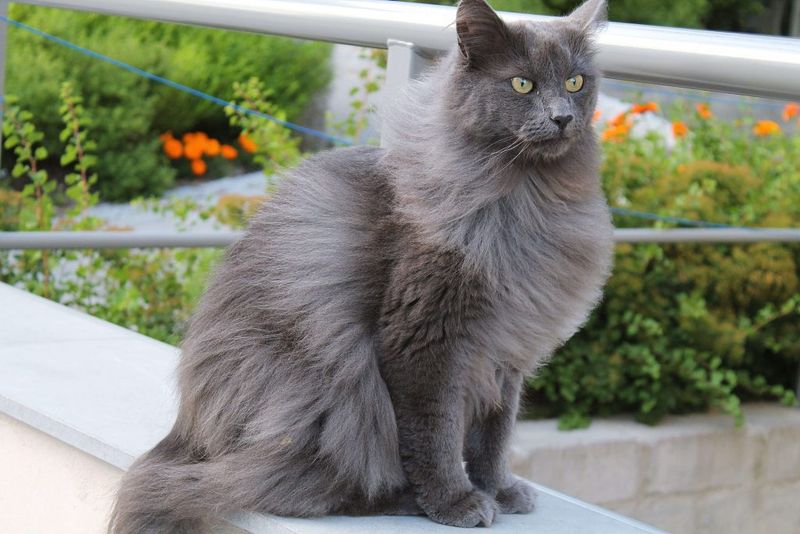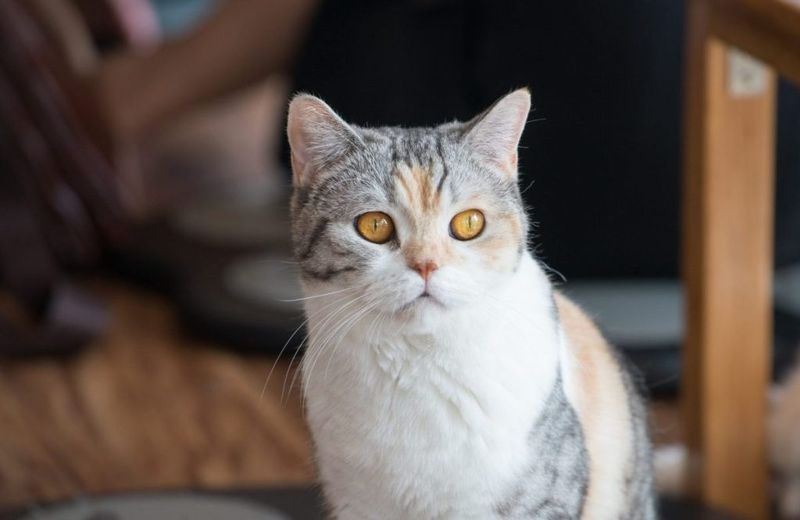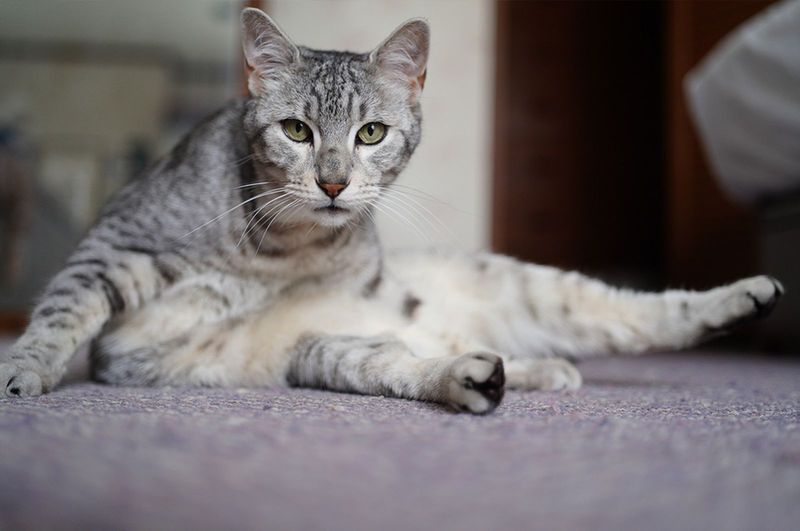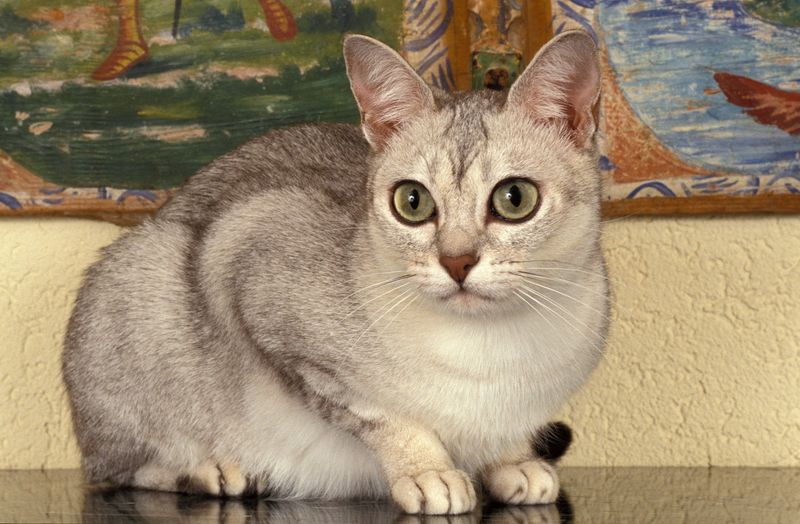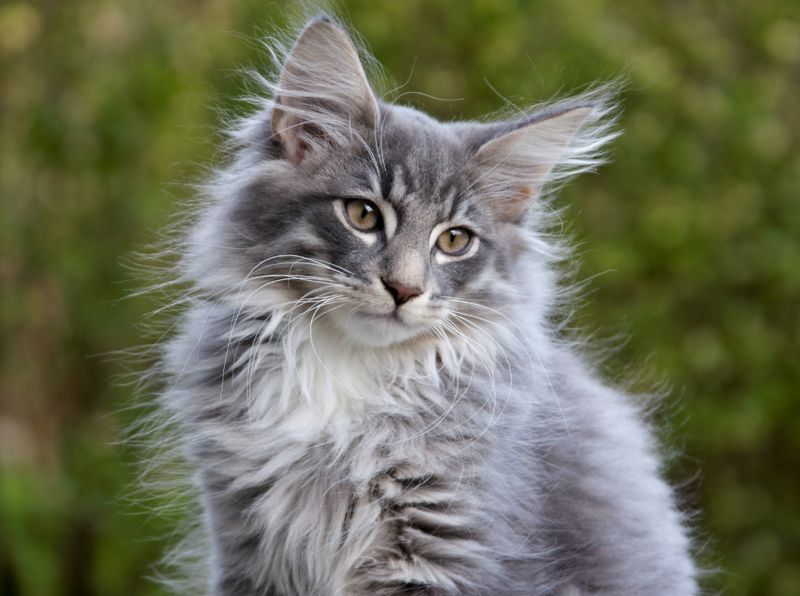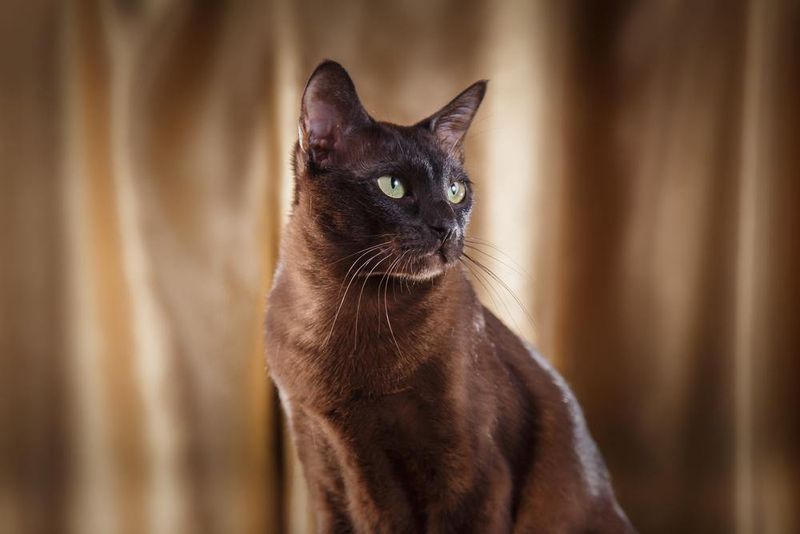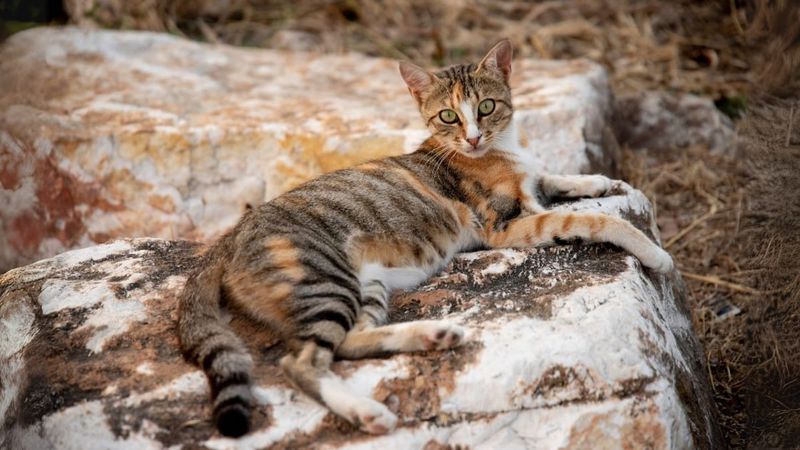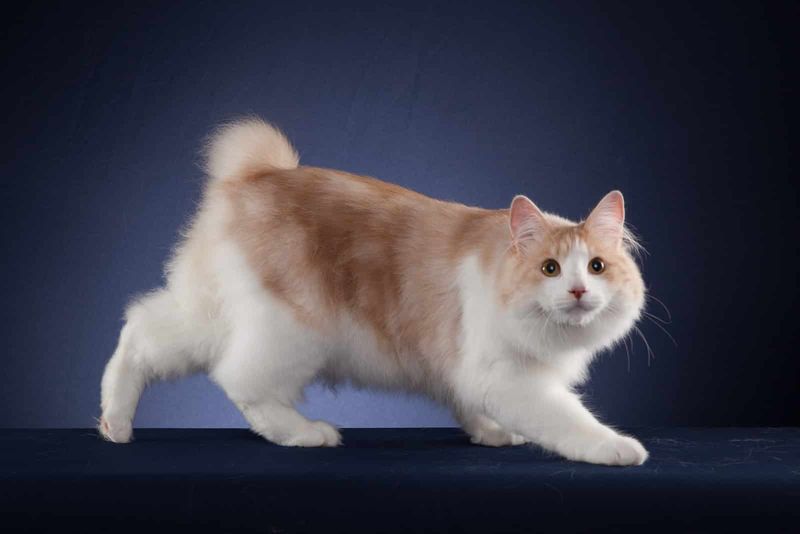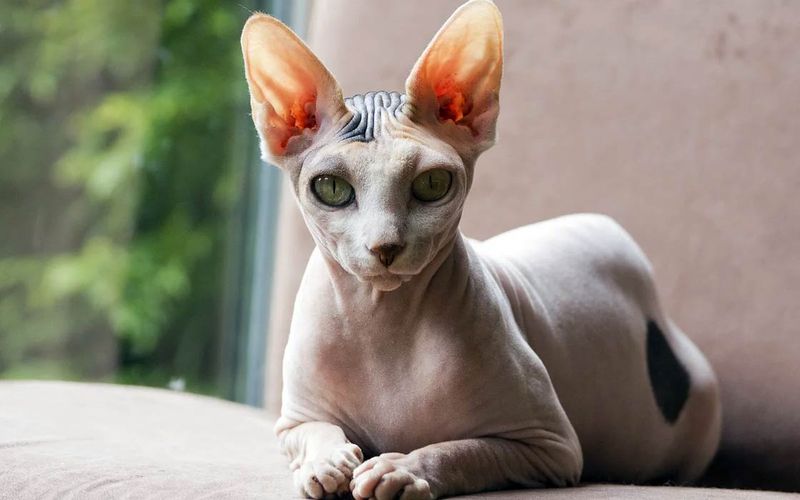📖 Table of Content:
While many cats find loving homes across America, certain breeds consistently struggle to get adopted. These unique felines often have distinctive appearances, specific care requirements, or simply lack the popularity of mainstream breeds. Understanding these overlooked cat breeds might help potential pet parents consider options beyond the familiar favorites and give these special kitties the chance they deserve.
1. Korat
The silver-blue Korat hails from Thailand where they’re considered good luck charms. Despite their beautiful appearance and loving personalities, these cats remain relatively unknown in American shelters.
Korats form intense bonds with their owners and prefer quiet, stable environments. Their distinctive heart-shaped faces and luminous green eyes make them stand out among other blue-coated breeds.
These cats typically live 15+ years and don’t reach full maturity until age three. Traditionally given in pairs as wedding gifts in Thailand, Korats are still rare in the U.S. breeding circles, contributing to their low adoption rates.
2. Turkish Van
Swimming cats exist! Turkish Vans actually enjoy water, earning them the nickname “swimming cats.” Their distinctive white bodies with colored markings on the head and tail create a unique appearance that stands out.
Originally from the Lake Van region of Turkey, these cats have a water-resistant coat that helps them navigate their native lake environment. Their rarity in the U.S. stems from strict export limitations from Turkey and a small breeding population.
Turkish Vans develop slowly, reaching full maturity around 3-5 years old. Their energetic, dog-like personalities require engaged owners who can provide plenty of playtime and stimulation.
3. LaPerm
Born from a genetic mutation on an Oregon farm in 1982, LaPerms sport curly, textured coats unlike any other cat breed. Their distinctive appearance hasn’t translated to popularity, making them one of America’s least adopted breeds.
LaPerms are known for being exceptionally affectionate and people-oriented. They’ll follow their owners around the house and prefer to be involved in all activities.
The curly coat requires minimal maintenance despite its unusual appearance. Most LaPerms are born completely bald, developing their signature curls as they mature. This dramatic change in appearance sometimes leads to surrender when owners don’t expect the transformation.
4. Singapura
As the world’s smallest domestic cat breed, Singapuras weigh just 4-8 pounds at full maturity. Their petite size and big personalities create an adorable package that surprisingly struggles to find homes.
Originating from Singapore’s streets, these cats feature ticked coats in warm sepia tones and large, expressive eyes. Their diminutive stature doesn’t match their bold, curious temperaments.
Singapuras remain rare in the United States due to limited breeding programs and low awareness. They’re active cats that require mental stimulation and interactive play. Despite their intelligence and affectionate nature, many potential adopters overlook them in favor of more recognized breeds.
5. Chartreux
The Chartreux’s blue-gray coat and copper eyes create a striking appearance, yet this ancient French breed remains uncommon in American homes. Dating back to the 16th century, these cats were companions to Carthusian monks and skilled mousers in French monasteries.
Known for their silent nature, Chartreux cats rarely meow and communicate mostly through chirps and trills. Their plush, water-repellent double coats feel like sheep’s wool and require minimal grooming.
Despite their muscular bodies, Chartreux cats move with surprising grace. Their sweet, smiling expressions match their patient temperaments. Historically nearly extinct after World War II, dedicated breeders saved the Chartreux, but numbers remain low in the U.S.
6. Havana Brown
With fewer than 1,000 Havana Browns registered worldwide, this chocolate-colored breed faces potential extinction. Their striking mahogany coats and vivid green eyes make them visually stunning, but few Americans ever encounter one.
Havana Browns resulted from crossing Siamese with black domestic shorthairs in 1950s England. They feature distinctive muzzles with a slight pinch that gives them an elegant profile unlike any other breed.
These cats use their paws like hands, touching and examining objects with curiosity. Havana Browns form strong bonds with their people and enjoy being involved in household activities. Their rarity stems from a limited gene pool and few dedicated breeders in the United States.
7. Nebelung
The Nebelung’s name means “creature of the mist” in German, perfectly describing their ethereal blue-gray long fur and mysterious aura. Created in the 1980s, this breed resembles a long-haired Russian Blue but remains virtually unknown to most cat adopters.
Shy around strangers, Nebelungs bond deeply with their chosen humans. Their reserved nature often gets misinterpreted as aloofness in shelter environments, leading to longer waits for adoption.
These cats thrive on routine and dislike household changes or disruptions. Their silky coats require weekly brushing to prevent matting. Despite their striking appearance and loyal personalities, Nebelungs remain one of America’s best-kept feline secrets, with only a handful of dedicated breeders nationwide.
8. American Wirehair
Born from a spontaneous mutation in a New York farm litter in 1966, American Wirehairs feature uniquely textured coats with crimped, hooked, or bent hairs. Their distinctive coat feels like steel wool or lamb’s wool to the touch.
Despite being an all-American breed, they’re more popular in Europe than in their homeland. Only about 22 kittens are registered annually with the Cat Fanciers’ Association, making them one of the rarest breeds in existence.
American Wirehairs have easygoing, adaptable personalities that would suit many homes. Their coats require minimal maintenance despite the unusual texture. The breed’s rarity stems from limited breeding programs rather than any temperament or health concerns.
9. Egyptian Mau
The only naturally spotted domestic cat breed, Egyptian Maus feature distinctive markings reminiscent of their wild ancestors. These athletic cats can run up to 30 mph, making them the fastest domestic cats in the world.
Maus possess unique flaps of skin extending from their flanks to their back legs, allowing extraordinary jumping ability and agility. Their spotted coats come in silver, bronze, or smoke colors with gooseberry green eyes.
Despite their ancient heritage and connection to Egyptian artwork, these cats remain uncommon in American homes. Their high energy levels and vocal nature require engaged owners. Extremely sensitive to temperature and environment changes, Maus often struggle in shelter settings, contributing to their low adoption rates.
10. Burmilla
Created accidentally in 1981 when a Chinchilla Persian and a Burmese cat had an unplanned meeting, Burmillas combine the best of both parent breeds. Their silvery coats with shaded or tipped patterns give them an elegant appearance that hasn’t yet caught on in America.
Burmillas feature distinctive “makeup” around their eyes, resembling smudged eyeliner that enhances their expressive gaze. Their playful nature continues well into adulthood, making them perpetual kittens at heart.
The breed remains rare worldwide, with limited breeding programs in the United States. Burmillas are known for their mellow, adaptable personalities that would suit many households. Their moderate activity levels and affectionate nature make their low adoption rates particularly puzzling.
11. Norwegian Forest Cat
Despite their Viking heritage and impressive size, Norwegian Forest Cats remain surprisingly uncommon in American homes. These majestic felines evolved naturally in Scandinavia’s harsh climate, developing water-resistant double coats and tufted ears that protect against snow and cold.
Their slow maturation process means they don’t reach full size until age five. Males can weigh up to 16 pounds, with substantial bone structure and muscular builds designed for climbing and hunting.
Norwegian Forest Cats appear in Norse mythology as fairy cats who couldn’t be outrun even by the god Thor. Their independent nature and outdoor instincts sometimes clash with apartment living. Although growing in popularity, they remain far less common than similar-looking Maine Coons.
12. Tonkinese
Blending Siamese and Burmese characteristics, Tonkinese cats feature striking aqua eyes that set them apart from other breeds. Their medium-sized, muscular bodies come in various point colors with mink, solid, or point patterns.
Tonkinese cats combine the vocal nature of Siamese with the more moderate temperament of Burmese. They form strong bonds with their families and don’t do well when left alone for long periods.
Despite their charming personalities and beautiful appearance, Tonkinese remain relatively unknown compared to their parent breeds. They excel at learning tricks and playing fetch. Their social nature means they often do better with companion pets, which can make adoption more challenging for families seeking just one cat.
13. Sokoke
One of the world’s rarest cat breeds, Sokokes originated from Kenya’s Arabuko-Sokoke forest. Their distinctive tabby patterns resemble tree bark, providing perfect camouflage in their native forest habitat.
Sokokes have long, lean bodies with minimal fat and very short coats that require almost no grooming. Their wild appearance belies their friendly, social nature with humans.
First recognized as a breed in the 1990s, Sokokes remain extremely rare outside their homeland. Their highly social nature means they don’t do well as solo pets. These cats form strong bonds with their families and enjoy participating in household activities. Their unique appearance and friendly temperament make their rarity in adoption centers particularly unfortunate.
14. Kurilian Bobtail
Native to Russia’s Kuril Islands, these natural bobtails feature distinctive pom-pom tails that result from a genetic mutation unlike any other bobtail breed. Each Kurilian’s tail is unique, like a fingerprint, with 2-10 vertebrae that can form spirals, curves, or zigzags.
These cats are excellent fishers who will happily dip their paws into water to catch a meal. Their powerful hind legs enable impressive jumps up to six feet high.
Despite being popular family cats in Russia for centuries, Kurilians remain virtually unknown in American homes. They have dog-like personalities, often following their owners and coming when called. Their thick, water-resistant coats handle cold weather beautifully but require regular grooming during seasonal changes.
15. Peterbald
Developed in Russia in 1994, Peterbald cats stand out with their distinctive hairless or partially hairless bodies. Unlike Sphynx cats, Peterbalds have a hair-loss gene that creates five different coat types ranging from completely bald to a full coat with unusual texture.
Their elegant, oriental body type features long legs, almond-shaped eyes, and oversized ears. Peterbalds have extremely fast metabolisms, requiring more food than similarly sized cats.
These intelligent cats form strong bonds with their humans and don’t like being left alone. Their rarity in America stems from limited breeding programs and specialized care requirements. Peterbalds need regular bathing to remove body oils and protection from both sun and cold temperatures.
